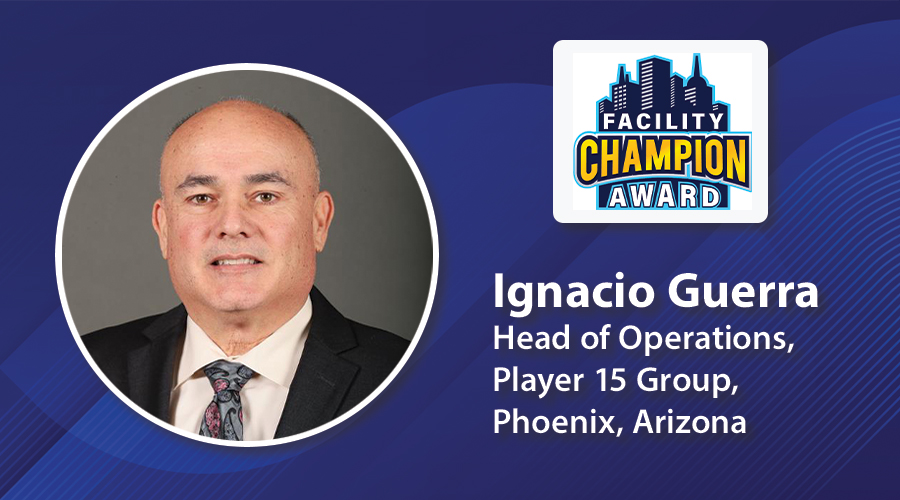 CookUnity
CookUnityCompanies Using Benefits to Sweeten Return-to-Office Mandates
As hybrid work increases, hospitality-style amenities and services provide comfort and convenience.
By Valerie Dennis Craven, Contributing Writer
Companies requiring employees to be in the office are on the rise: As of October 2024, 75 percent of workers with teleworkable jobs were required to go in at least some of the time, up from 63 percent in February 2023, according to Pew Research Center findings. Of workers able to conduct their jobs from home, nearly half (46 percent) reported that if they couldn’t stay home at least some time, they would be unlikely to stay at their job.
Since the COVID-19 pandemic flipped work-life balance upside down in early 2020, the workplace has undergone significant evolutions, accelerating remote work trends, says Bill Davies, vice president for Davies Office sustainable office furniture supplier.
“How do you get back to what's normal, and how do you define what is normal in the office space?” Davies asks. “There are a number of people that are comfortable and productive working remotely, and they feel that it’s not necessary they return to the office” despite hybrid models and attendance mandates.
Craig Window, president at Circles, a Sodexo company, echoes that sentiment, saying that employees have proven their productivity despite location over the past five-plus years, but are now being asked to dress up and commute into an office without having a clear impact on performance.
He calls it a “tough sell” for companies to bring back some employees, who may have moved away during remote work and are no longer an easily commutable distance to the office. He’s seen return to office mandates around employees within a certain radius of the office or for a set number of days a week or month.
Window is seeing a trend from larger companies expecting employees to return to the office in the name of innovation and in-person collaboration.
“I think it will bring like-minded people together for a deeper connection to employees in their department,” he says. “Does that outweigh the cost of the commute and other logistical things they need to tackle during the day? It would be a good debate topic.”
Creating a commuting destination
The solution to softening the shift back to the office – and making a workplace desirable to future employees – is perks. At IFMA’s World Workplace 2025, employee amenities were featured on the show floor.
Employee experience and workplace hospitality was noted by Circles as a current facilities management trend. It states that workplace hospitality management services are turning buildings into destinations worth the commute to create an environment where employees feel supported and valued.
“You want employees to come to the office because they want to, not because they have to,” says Tximista Lizarazu, director of business development for B2B at CookUnity. “Food is a great way to do that.”
FraÎche by CookUnity is a smart fridge with round-the-clock access to gourmet food refreshed daily. This allows building occupants flexibility and proximity to quality food. Companies that offer this solution could even use it as a case for their goals around sustainability, health or wellness, Lizarazu says.
Time-saving amenities can be a good incentive for employees returning to the office, acknowledging that the company realizes they are asking for time that could be used for personal time.
“How do we make the logistics of life a bit easier? Errand running is one,” says Window, who has seen this service grow among its clients, based on employee requests. Common support he cites includes returning items, picking up groceries, dropping off packages, and managing family related tasks (like researching summer camps, vacation planning or finding a piano teacher).
Amenities that support employees’ personal lives are seen as “tremendously valuable,” he says. “Convenience gets employees on site, and connection will make them stay.”
That’s where offering hospitality style services that help employees feel in control of, and able to work in, a comfortable environment is critical. People are used to working in their own home, and rows of cubicles won’t bring them into the office.
“People want to make sure they have a comfortable place to work,” Davies says. “It’s not a one-size-fits-all approach. How do you provide a meaningful work environment for each individual?”
One approach the furniture dealer has noticed is offering a workplace allowance or ergonomic office solutions. Additionally, offering a variety of seating options throughout the office, from collaborative open areas to phone booths and spaces for head’s down work and privacy.
Gone are the days when having a ping pong table or even a nap pod tucked into a corner would suffice as in-office balance, worth the commute. “Employees are savvy. They know a gimmick versus genuine benefits to get them to come back,” Window explains.
How to determine and roll out benefits
Benefit trends can vary by industry, location or even building type, Window says, and can be implemented for as little as around $5 an employee a month – work-life balance support or basic virtual hospitality offerings – to upwards of $75 each – which involves full on-site concierge teams, a curated event planning committee and hospitality ambassadors to support employee needs on demand.
Facility executives can determine what perks employees may want by asking. Simple activities like pulse surveys or stakeholder interviews with people in different roles and functions can unlock what benefits employees would want.
“Everybody wants the best, but start small,” Window recommends. “Make sure it works for your population. Do a pilot program at one site or for one employee population. Test it, use surveys, get feedback. Refine it from there, scale out and build on it.”
When in doubt, start with the low-hanging fruit, gathering quick employee satisfaction through services that offer convenience.
“If it’s working, people will tell you what they’re looking for and what else they want, especially if they see more services being offered,” Window says.
Facility executives must get creative about how – and where – to measure success: Businesses may see a spike when a new perk is introduced, or days a perk is present (think subsidized lunch).
In the case of FraÎche, Lizarazu has noticed a lot of people looking at the weekly menus on Sunday nights, possibly to plan in-office days or weekly food prep. Clients tell him that, with the fridge installed, people have worked later (knowing food is available for them) or more people have come to the office, which can lead to engagement and collaboration. “It’s like the office water cooler,” Lizarazu says.
Show employees that they are appreciated
Facility executives must balance the needs of employee comfort and workplace productivity.
“Employees want to know that their work is purposeful and they want to be supported,” Window says.
Once a job candidate is on site and before the interview, Window likes for them to have a building tour “so they can see all the bells and whistles,” highlighting key amenities. He notes that for candidates who have seen these items firsthand, job acceptance rate increases.
Beyond simply showing candidates these perks or listing services for employees, the company can craft a narrative around the offerings and help employees understand not only what benefits are available, but why they are valuable, what they were chosen for and how to take advantage of them.
Window suggests calling out features or getting quotes and testimonials from people telling the improvements that the perks supported (time saved, support received, etc.).
In the end, companies should offer perks and amenities that feel right for the company culture and boost productivity. After all, Window notes that “happiness is so subjective, right? It's going to mean something different to everyone.”
Valerie Dennis Craven is a freelance writer based in Plymouth, Minnesota.
Related Topics:










